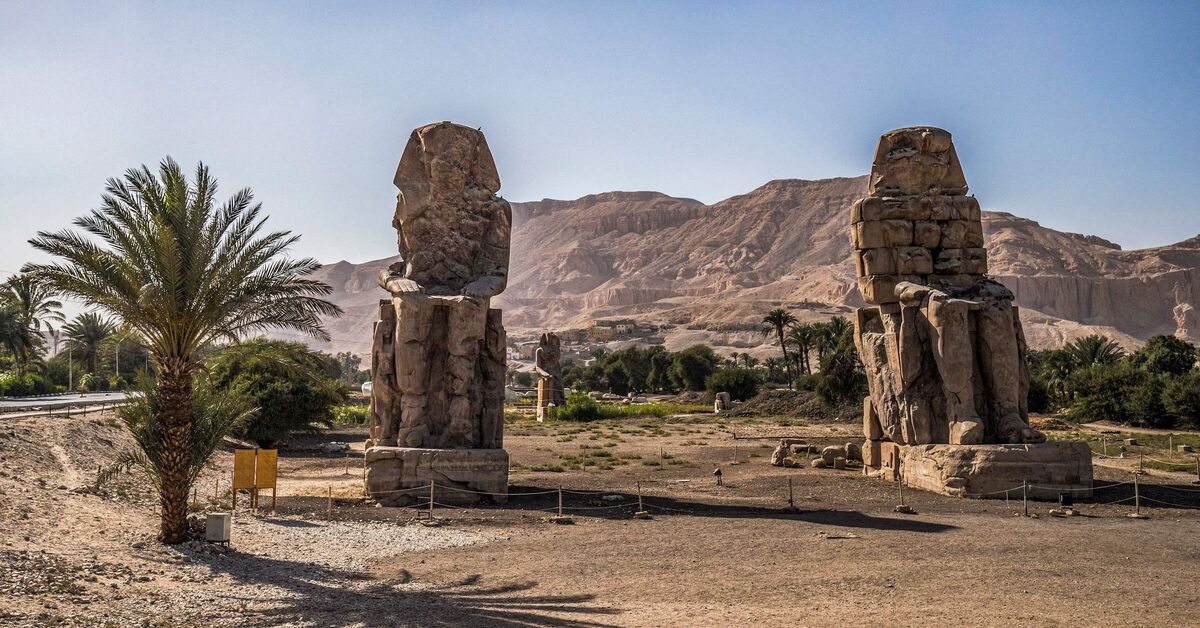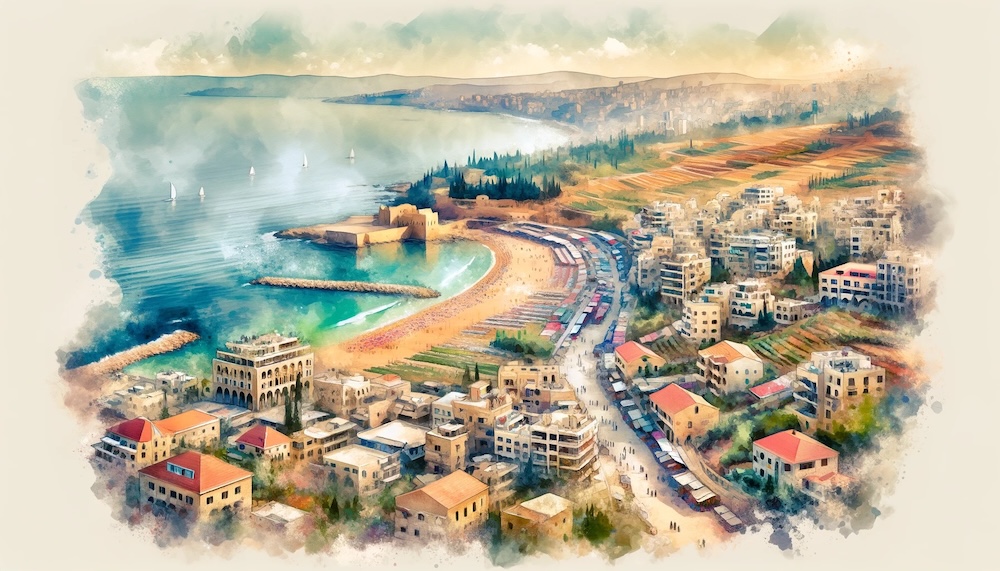
CAIRO — An Egyptian-German archaeological mission shared a new archaeological discovery Jan. 15 within the mortuary temple of King Amenhotep III — or as the traditional Egyptians known as it, the “Temple of Tens of millions of Years” — within the western mainland of Luxor. The mission unearthed blocks of two enormous limestone colossi of King Amenhotep III within the form of sphinxes, in addition to the stays of columns and partitions embellished with ceremonial and ritual scenes.
Chatting with Al-Monitor, mission head Hourig Sourouzian stated the invention reveals the form of the most important mortuary temple within the western mainland. “This temple housed a lot of statues, fashions and wall decorations, earlier than it was hit by a devastating earthquake in 1200 BC,” she stated.
Secretary Common of the Supreme Council of Antiquities Mostafa Waziri revealed in press statements that the 2 enormous limestone statues of king Amenhotep III sporting the striped nemes headdress, the royal beard and a large collar across the neck had been discovered on the rear of the gateway of the third pylon of the temple.
He famous that items of the sphinxes’ inscribed chests had been recovered and one in every of them bears the identify of King Amenhotep III, which implies “the beloved of Amun-Re.”
Waziri added that the mission additionally uncovered three decrease elements of granodiorite statues of the lioness goddess Sekhmet on the façade of the Peristyle Court docket and within the Hypostyle Corridor of the temple. He famous that the newly found items might be placed on show of their authentic locations within the temple together with different items discovered earlier on the website.
He additional indicated that bases that when supported columns had been discovered within the southern half of the Hypostyle Corridor of the temple, suggesting that the corridor was a lot bigger.
The brand new discovery by the Egyptian-German mission got here as a part of the Colossi of Memnon and Amenhotep III Temple Conservation Project, launched in 1998 below the supervision of the Egyptian Ministry of Antiquities and the German Archaeological Institute. The mission beforehand uncovered a number of enormous artifacts together with statues of the goddess Sekhmet and new colossi of King Amenhotep III and his spouse Queen Tiye.
The 2 sphinxes as soon as measured about eight meters lengthy. “This discovery make clear the processional method from the third pylon to the Peristyle Court docket,” Sourouzian stated. “Within the peristyle, the newly found items of wall reduction reveal new scenes of the Heb-Sed, a competition of the king began after 30 years of his rule and repeated each three years thereafter.”
Abdel Rahim Rihan, director normal of analysis, archaeological research and scientific publication in South Sinai on the Ministry of Tourism and Antiquities, defined the Heb-Sed competition to Al-Monitor. “This is among the most necessary feasts for historic Egyptians that celebrates the tip of the thirtieth 12 months of the king’s ascension to the throne. The depictions of this competition present the king on his throne in full energy, with the crowds round him comfortable and excited, ready for his speech promising them one other 30-year reign filled with prosperity and opulence. On this event, the king would additionally make choices to the gods.”
He added, “After the pharaoh’s choices, he could be topped first with the white crown of Higher Egypt after which with the crimson crown of Decrease Egypt. Then a papyrus and a lotus could be wrapped round a stake, representing the unification of the 2 lands. The competition would culminate within the pharaoh working round a race observe within the courtyard of his palace to exhibit his bodily prowess.”
Amenhotep III dominated Egypt for practically 4 many years and managed to take care of prosperity and political stability till his loss of life in 1349 BC on the age of fifty. His mortuary temple is among the grandest of all mortuary temples in-built Egypt.
Sourouzian studied the historical past of artwork and monuments of historic civilizations on the École du Louvre in Paris. Her doctorate analysis on the Paris-Sorbonne College examined royal statuary. Throughout her research on the Louvre, she was despatched to Egypt on an archaeological mission on the Karnak Temple Complex, generally generally known as Karnak. Later, she labored for a lot of different German, French and Swiss missions. Now, she is main the mission at the temple of Amenhotep III.
“Our important job of this mission is to step by step doc, reassemble and restore the final stays of this temple, then show these monumental stays of their authentic locations,” Sourouzian stated.
In response to the World Monuments Fund, the mortuary temple of Amenhotep III “initially included three huge mud-brick pylons, or gates, aligned on a single axis, and a protracted connecting hall resulting in an immense, open photo voltaic courtyard, a roofed corridor, a sanctuary, and sacred altars. The temple contained a whole lot of freestanding statues, sphinxes, and large steles — tombstone-like slabs of stone, as soon as carved with descriptions of Amenhotep III’s constructing achievements.”
Nonetheless, Amenhotep III’s mortuary temple was constructed too near the Nile River. Over the course of centuries, water repeatedly inundated the complicated, damaging its structure and statutes.
Sourouzian stated, “This can be a nice problem. We already accomplished a primary section of reducing the bottom water stage within the Peristyle Court docket and the Hypostyle Corridor in 2006. Now we are going to dewater the areas of the pylons and the courts resulting in the good Peristyle Court docket.”
“The mission consists of 4 phases. It begins with a survey of the location, documentation and restoration of all seen stays on it. Then, archaeological investigations could be performed to assemble data and protect the newly found constructions. Through the third stage, the reassembled monuments could be put in at their authentic locations. The final stage consists of website administration, website and data safety and presentation of the Peristyle Court docket and the Hypostyle Corridor in an open-air museum for monumental sculpture and stelae,” Sourouzian stated.
Though the archeologist indicated that the temple restoration course of might be prolonged, she acknowledged that the fourth stage has began and might be accomplished within the close to future.



